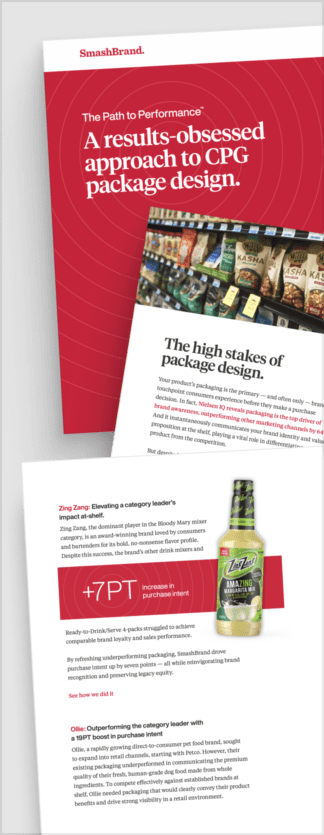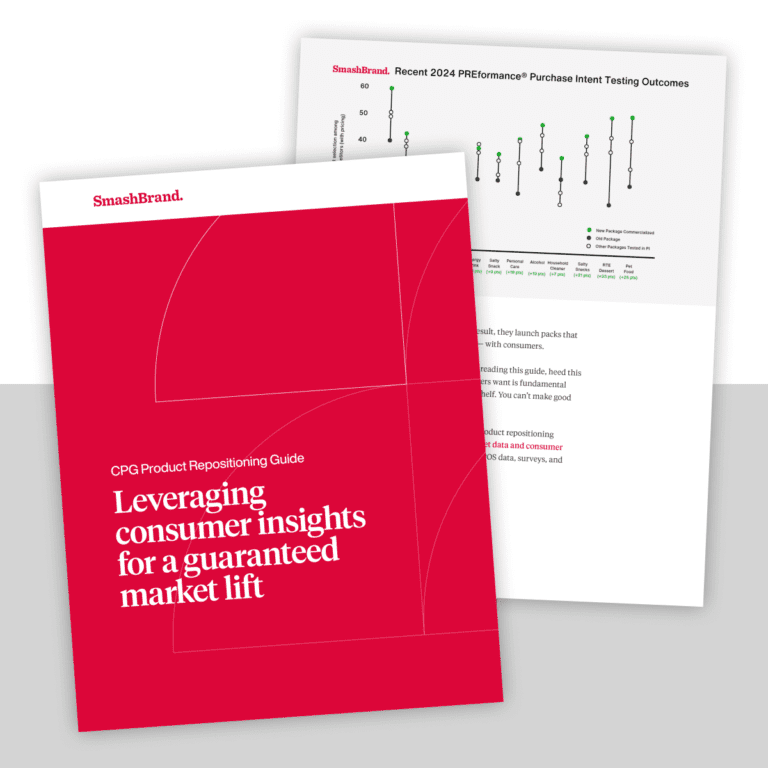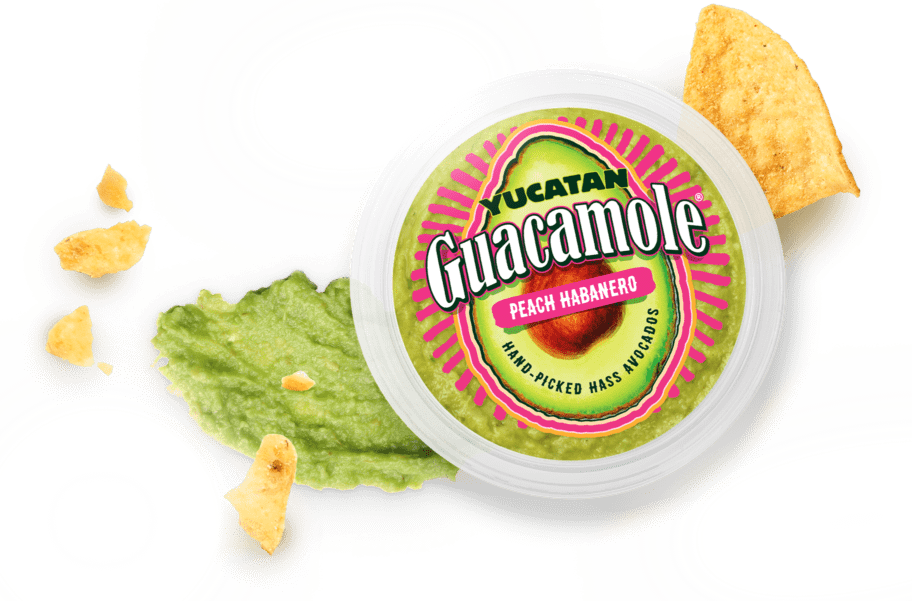When picking a cleaning product, consumers look for many things: something that works fast, is easy to use, and won’t ruin their deck, siding, or plants. But before they read a single claim, they usually make a judgment based on one thing: the cleaning product packaging design.
Effective cleaning product packaging is far more than just graphic design elements or a good-looking product label; it’s how your packaging earns trust and drives purchase. Whether launching a new cleaning product, updating your packaging material, or rethinking your entire packaging design, what’s on the outside must perform.
In this article, you will learn to build a cleaning product packaging design that delivers. You will get practical insights on graphic design, structure, messaging, and what drives consumer choice in cleaning product packaging.
Understand the cleaning product buyer’s mindset.
Learning about the buyer’s mindset is critical before designing targeted packaging. Buying a household cleaning product isn’t just about utility but emotional payoff. Most consumers approach cleaning with a mix of stress and procrastination.
Whether it’s tackling mold on siding, mildew on outdoor furniture, or a pile of laundry waiting for the right laundry detergent, the emotional arc starts with dread. But the result? Satisfaction and pride. A space that looks better, feels better, and proves the job was done right.
This is why cleaning product packaging must speak directly to the problem-solving mindset. For many, especially “weekend warriors,” the trigger is urgent: visible grime, a seasonal refresh, or a must-do chore before guests arrive. These buyers grab what looks like it’ll work fast. In that moment, your product label, packaging material, and even the shape of your jars all play a critical role.
Great packaging design inspiration balances clarity with appeal, and today, it often includes sustainable packaging cues to build trust. In short, cleaning solutions live or die by how well their packaging sells the outcome, instantly.
What consumers look for on the shelf.
In cleaning product packaging, what buyers see in a split second is all that matters. Shoppers aren’t dissecting every word. They make snap decisions based on visual clarity, perceived performance, and trust cues built directly into the packaging.
This means your packaging label, format, and material must communicate key benefits without wasting time and needing extra explanation. Below are the five non-negotiables every effective cleaning product packaging strategy must deliver:
Efficacy first.
On store shelves, efficacy is the starting line. When consumers shop for household products, especially cleaning solutions, their eyes scan for one promise: Will this work? If your packaging label doesn’t clarify that message, you’ve already lost them.
Strong, benefit-led claims like “Powerfully cleans stains, front dirt, mold, and mildew” are non-negotiable, whether it’s a spray bottle for siding or a plastic bottle of hand soap. Choosing the right words, in proper order, supported by confident labeling, turns uncertainty into action.
Speed and ease.
People don’t browse the cleaning aisle hoping to spend their weekend scrubbing. Consumers want fast, frictionless results. That’s why language like “spray on & rinse off” or “one step, no scrubbing” converts.
Your product packaging must telegraph simplicity from five feet away. Use bold typography, strategic box design, and visual hierarchy to give speed and ease to the front seat. And make sure the packaging solutions back up that promise with real utility.
Visual proof.
Cleansing great means nothing without context. You must show it. Before-and-after visuals always outperform text-heavy claims. Consumers need to see the transformation to believe them. This is especially true in the cleaning category, where the payoff is intensely visual.
Use the real estate on your packaging to demonstrate results. In crowded store shelves, visuals are your shortcut to trust. They’re also a form of silent branding: instantly recognizable, memorable, and motivating.
Versatility.
Buyers want a do-it-all household cleaning product that handles multiple jobs without switching bottles. Messaging like “Cleans multiple surfaces” delivers that universal appeal, but general claims aren’t enough. Call out high-priority substrates like siding, decks, and masonry directly on the packaging. Visually reinforce it with clear icons or contextual imagery. Whether
Designing for a key growth audience.
Millennials are not impressed by “pro strength” positioning. What resonates more is a quick, no-fuss solution that feels approachable and delivers on the promise without complication. Long instructions or intimidating packaging formats are a turnoff. If your container looks complex or time-consuming, they’ll skip it.
Millennials fear time-sinks, messy processes, and anything that might harm their pets, spaces, or peace of mind. That means design elements must reinforce safety and ease. If you’re using a pouch format, show how it reduces plastic waste. If you’re offering a plastic bottle, highlight features like controlled spray or ergonomic grip, and make sure it looks intuitive.
Designers must use an upbeat, direct tone to connect with this audience. Don’t overdesign or overexplain. Instead, lead with visible benefits and clear labeling. Messaging around “safe for pets” or “plant-friendly” builds trust quickly, as does proof of eco-responsibility.
These shoppers also gravitate toward products with strong brand recognition, so keep your packaging consistent across SKUs to reinforce familiarity and shelf presence.

Path to Performance™
Taking a results-obsessed approach to CPG package design.
Learn how SmashBrand’s proprietary process – rooted in scientific principles, informed by data, and validated by your target audience – takes the guesswork out of package design and delivers guaranteed results.
Cleaning product packaging design that converts.
Effective packaging is based on consumer behavior, innovative structure, and clear messaging. Here’s how to make excellent packaging that converts, using creative design elements and regulatory awareness.
Front-of-pack messaging hierarchy.
Every second counts on the shelf, so the labeling must be prioritized for clarity and impact. Effective designers know how to lead with the product’s outcome. That might mean showcasing sparkling clean siding or a mildew-free deck for detergents and surface cleaners.
Underneath the outcome, stack key claims around speed, surface versatility, and ease phrases like “No Rinse Needed” or “Works on 5+ Surfaces” support the core benefit. This hierarchy makes it easy for the shopper to mentally scan and self-qualify the product.
Reinforce credibility, trust symbols like review star ratings, third-party seals, and “6-Month Protection” badges deliver confidence. These visual cues support labeling requirements while building brand recognition, a critical factor in crowded in-store marketing environments.
Visual language.
Visuals are non-verbal trust builders. A strong design element like a before-and-after photo, grime transforming into gleaming surfaces, or even subtle gradients that suggest shine can outperform paragraphs of copy. These cues satisfy the consumer’s need for instant proof.
Brilliant designers also use color blocking. Clean whites combined with bright blues or greens convey ease and modernity. If your product is intended for everyday use, avoid a design that leans too clinical or aggressive, harsh reds or metallics may unintentionally signal hazardous materials unless you specifically target professional cleaners.
Structure and function.
The best packaging works before it’s even opened. Your packaging needs must reflect real-world usage, from spray bottles with ergonomic grips to hose-end attachments that simplify large surface jobs. These structural choices are as vital as the pouch, bottle, or box format you select.
Convenience callouts are conversion tools. Highlighting features connects with both practical and sustainability-minded buyers. If your format helps reduce waste or incorporates recycled material, this should be clearly stated within your brand style guide and featured on the pack.
Functional packaging also ensures compliance. Know your labeling requirements, mainly if your product contains hazardous materials. Failing to meet these standards doesn’t just hurt credibility, it can knock you off the shelves.

Nice Package
Don’t miss out on our monthly newsletter Nice Package!
Each month, we deliver a data-driven newsletter directly to your inbox, unpacking a critical topic in the FMCG & CPG industry.
"*" indicates required fields
Data-Driven Brand Development
Looking for a packaging design company that delivers more than promises? SmashBrand integrates strategy, testing, and design to create packaging that wins at shelf and accelerates sales. We back it with data and a guarantee. Don’t gamble with your brand. Choose a partner obsessed with performance.
Subscribe to
Nice Package.
SmashBrand’s Nice Package: Stay current with our latest insights
Free Resource.

CPG product repositioning guide.
Explore the five undeniable signs your CPG product needs repositioning along with strategies for leveraging consumer insights for a guaranteed market lift.
Download Whitepaper About CPG product repositioning guide.


